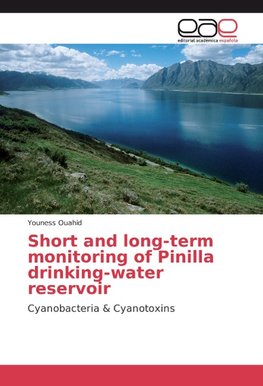
-
 Španielsky jazyk
Španielsky jazyk
Short and long-term monitoring of Pinilla drinking-water reservoir
Autor: Youness Ouahid
Due to its health risk, the presence of toxic cyanobacteria blooms in water reservoirs used for direct human consumption and/or recreation is receiving increasing attention world-wide. The most frequent and best studied toxic cyanobacteria genus is Microcystis,... Viac o knihe
Na objednávku, dodanie 2-4 týždne
60.12 €
bežná cena: 66.80 €
O knihe
Due to its health risk, the presence of toxic cyanobacteria blooms in water reservoirs used for direct human consumption and/or recreation is receiving increasing attention world-wide. The most frequent and best studied toxic cyanobacteria genus is Microcystis, since many of its strains produce hepatotoxic oligopetides, microcystins (MCs). MCs are synthesized by the enzyme system microcystin synthetase (MCS), codified by the mcy genes. MCS includes two enzyme complexes, a non-ribosomal peptide synthetase (NRPS) and a polyketide synthase (PKS). Previous studies showed that there is no relationship between cyanobacteria biomass and MC production; therefore, an important clue in cyanotoxicity is monitoring of toxic cyanobacteria and cyanotoxins. For that, reliable methods to analyse toxins and identify toxic cyanobacteria are needed. Over four years we have monitored for MC-containing phytoplankton the Pinilla reservoir, one water supply in Madrid Community.
- Vydavateľstvo: Editorial Académica Española
- Rok vydania: 2017
- Formát: Paperback
- Rozmer: 220 x 150 mm
- Jazyk: Španielsky jazyk
- ISBN: 9783330095199

 Anglický jazyk
Anglický jazyk 










